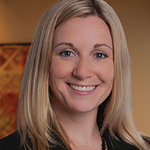
© PopTika / shutterstock.com
In other words, the IDR framework establishes the procedures and timeframes for providers and insurers to settle negotiations regarding out-of-network rates when state law doesn’t exist to govern dispute resolution procedures. The IDR process will be governed by independent dispute resolution entities. (Per 86 Fed. Reg. 36,888 (Oct. 7, 2021)), an IDR entity is an arbitrator that is held to conflict-of-interest standards and has training that is, at a minimum, equivalent to arbitration training provided by the American Health Law Association or the American Arbitration Association.)
Explore This Issue
January 2022The IDR framework includes the following actions and timelines for actions pertaining to resolving differences substantially in excess of good faith estimates. HHS has defined “substantially in excess” of a good faith excess as the billed charges being at least $400 more than the good faith estimate for any provider or facility listed on the good faith estimate. Uninsured patients who are billed more than $400 above an up-front estimate may also bring cases to arbitration for an administrative fee.
Below are the steps to the new process that you might find yourself a party to if you or your heathcare facility requires mediation:
- Negotiating Period. Parties have 30 business days, starting on the day of initial payment or notice of denial of payment, to begin negotiating.
- Dispute Resolution Begun. Parties have four business days, beginning on the business day after the open negotiation period ends, to initiate an independent dispute resolution process following a failed open negotiation. Both parties must pay an administrative fee ($50 each for 2022), and the non-prevailing party is responsible for the certified independent dispute resolution entity fee for the use of this process.
- Choose a Dispute Resolution Entity. Once the official dispute resolution process has begun, the parties have three business days to agree upon the selection of a certified independent dispute resolution entity. In the case of a conflict in the selection of a certified independent dispute resolution entity, six days after the dispute resolution initiation, the Department of Health and Human Services, the Department of Labor, and the Department of the Treasury will select an entity. The arbitrator that is selected cannot be associated with an insurer or medical provider.
- Submit Information. Parties have 10 business days after the date that the certified independent dispute resolution entity has been selected to submit payment offers and additional information for consideration.
- Payment Determination Is Made. A payment determination is made 30 business days after the certified independent dispute resolution entity has been selected. The payment will be submitted to the receiving party 30 business days after the payment determination has been made.
Looking Forward
Updates to protections against surprise billing aren’t limited to the creation of new federal rules. On the contrary, states are using the popularity of the No Surprises Act among consumers as an opportunity to establish new state laws that align with these new federal rules. Most notably, in 2020 Colorado (H.B. 19-1774), New Mexico (Surprise Billing Protection Act), Texas (S.B. 1264), and Washington (Balance Billing Protection Act) each established laws similar to the No Surprises Act. In addition, over 30 states already have some form of balance billing protections on record.
Heading into 2022, providers and healthcare facilities should ensure that these considerations are addressed and, if questions remain, should consider obtaining professional advice from a healthcare attorney.
As a result, going forward, healthcare providers should consider:
- The impact of the No Surprises Act and state law on their business model. Are changes in how a provider operates required to comply with the No Surprises Act? New policies and procedures may be required to conform to the No Surprises Act. Among other issues, these policies may be related to obtaining patient consent, providing adequate notice, and the preparation and distribution of required disclosures.
- The interplay between state law (if applicable) and federal law, particularly as it relates to the determination of out-of-network rates. In certain cases, preexisting state laws and the new federal rules are inconsistent, as Congress deferred to some state laws and limited the degree to which the No Surprises Act preempts state laws. However, this isn’t universally the case, and, as a result, is an issue that may require specialized counsel to help healthcare providers resolve this issue.
Heading into 2022, providers and healthcare facilities should ensure that these considerations are addressed and, if questions remain, should consider obtaining professional advice from a healthcare attorney. Although the worst of the COVID-19 pandemic may be over, the demand for diagnostics is likely to remain high in the years to come. In addition, the use of telehealth and other virtual services isn’t likely to fade even as in-person options become available. As such, providers and facilities need to understand how the demand for diagnostics and their evolving business models will fit into the No Surprises Act regulatory landscape for pricing.
 Emily Johnson is a nationally recognized attorney, author, and speaker with McDonald Hopkins LLC. Email her at ejohnson@mcdonaldhopkins.com.
Emily Johnson is a nationally recognized attorney, author, and speaker with McDonald Hopkins LLC. Email her at ejohnson@mcdonaldhopkins.com.
Reprinted with permission from the American College of Rheumatology.